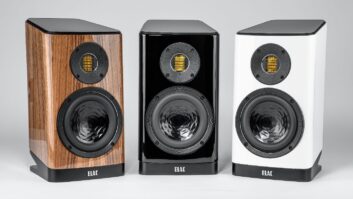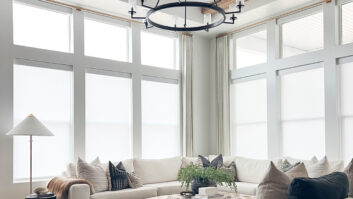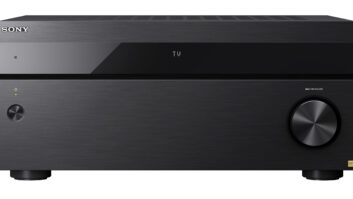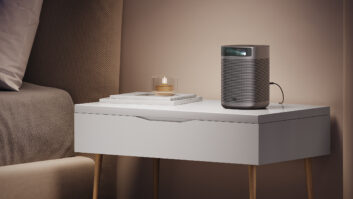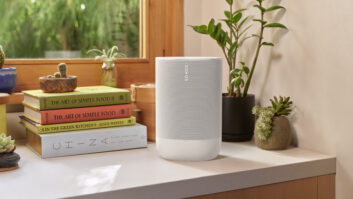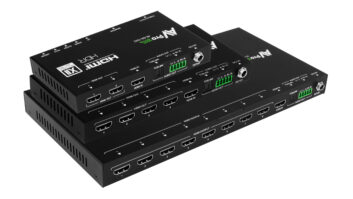Hitting Proper Bass Response Involves a Delicate Dance

Anthony Grimani ([email protected]) is president of Performance Media Industries, with offices in Novato and San Anselmo, California. You may recall that I recently discussed the resurgence of two-channel audio. As such, I’ve been in a number of high-end two-channel systems in recent months, and several of them had serious bass problems. Despite several decades of research since hi-fi was king, it seems that one problematic trend with two-channel audio is still around: the full range speaker.
Bass is important to your clients–even for music, even for two-channel. In fact, most listeners, particularly less experienced or astute ones, will perceive bass as 50 percent or more of overall sound quality. Therein lies the problem with full-range speakers.
I’m going to say this plainly, so there is no misunderstanding: You cannot always rely on full-range speakers to produce bass that will satisfy all your clients, because bass standing wave resonances make that impossible. The room that wraps around your speakers is going to act as a resonating enclosure and is going to cause build-ups and cancellations of sound pressure at various frequencies in various locations of the room. As a result, the bass impact can be totally lost or totally bloated. I have witnessed this over and over again, and so have some of the folks in the research group at Harman International, including Todd Welti, Floyd Toole, and Alan Devantier. Collectively, these fine scientists have studied bass propagation in rooms so thoroughly that you would be unwise to ignore their findings. They have established typical performance grades for thousands of speaker and subwoofer placements. The good news is that they found that some placements can reliably give you very good, solid bass by driving the standing waves in a way to contradict their efficiency. If you were a hobbyist with three years to futz with one room, you could probably try this yourself and find an arrangement where the bass and imaging were OK. But the speakers and chair would be the only things in the room. Or you might find a more aesthetically-pleasing arrangement where either the bass or the imaging were poor. As an electronic systems contractor, though, you need all three: good bass and good imaging and an aesthetically pleasing setup. And you need all three fast so as to not lose all of your profit margin in the process of tuning the system.
The Four-Corner Play
Fortunately, the solution to this bass problem is simple and obvious. Utilize subwoofers crossed-over low enough that you don’t hear their location. Place the main speakers for best imaging, and place the subwoofers for best bass interaction with the room’s inherent resonances. For best results you should utilize multiple subwoofers (ideally four in the corners of the room or at wall midpoints) fed through a good-quality subwoofer crossover. The four-subwoofer setup has been shown over and over again to reduce standing wave build-up, and is worth the added hassle of wiring and installation.
Just because you have two speakers instead of seven, or you drop off the LFE channel, doesn’t mean that the principles of bass reproduction you’ve learned go out the window. The two main speakers still need to hand off bass duties to subwoofers around 60-80 hertz. The main speakers don’t have to be small. You can still use those gorgeous furniture-grade monoliths if you like, but you’re actually better off from an imaging and aesthetics standpoints to go with smaller speakers.
This solution works, but that doesn’t mean it’s easy. In fact, integrating main speakers with subwoofers is one of the hardest things to do in a home system. Without sophisticated test gear, a flexible analog two-channel crossover (e.g. Bryston 10B or DB Systems DB-3), and a good working knowledge of crossover types, phase response, and speaker cabinet timing, you’re just stabbing in the dark. (Essentially, you’re trying to turn a two-way speaker into a three-way, or a three-way into a four-way, in-room, on the fly. Speaker engineers take years sometimes to do this in a lab.) This is probably the main reason some audiophiles claim that subwoofers make bass worse. In many cases, they’re right. But it’s not because subwoofers are the wrong way to go; they’re just hard to set up correctly. So cut the audiophiles some slack, and learn how to set subwoofers up right for them.
Picking the Right Components
Here are a few guidelines for picking the right components for a speaker system with subwoofers: Start by picking high-quality main speakers that play down to 60 of 80 Hz with a sealed enclosure design and a 12dB/octave rolloff below the lower limit. By not asking the speaker to play too low, you will probably end up with a higher sensitivity, which is good for dynamic range. Then pick a subwoofer that can play from 250 Hz down to 30 Hz with flat response and with a 12dB/octave rolloff below 30 Hz down to 15 Hz. The natural room gain will boost energy below 30 Hz, and the flat response above 80 Hz will ensure a proper phase alignment with the main speakers.
Next up, select this set of crossover parameters as a start point: 80 Hz, 24dB/octave Linkwitz Reiley Low Pass filter for the subwoofer, and 80 Hz, 12dB/octave Butterworth High Pass for the main speakers. The subwoofer signal should be a sum of the signal from the main speakers. Yes, that does mean that the subwoofers will be playing a summed mono signal, but believe me, below 80 Hz there is little evidence of audibility of signal differences between channels, and the benefit of distributing the bass to the four corners of the room yields such vast improvement in bass impact that it’s not worth arguing the incremental issue of stereo bass.

Using subwoofers crossed-over low enough that you don’t hear their location is the solution to achieving good, solid bass in a home installation, but it’s not as easy as it sounds. Pictured is Paradigm’s PDR-100.
I would also be remiss not to remind you that achieving proper bass response is a multi-step process that involves more than just the speakers and crossover. You start with engineering the room to minimize standing waves. Proper dimensioning, resilient wall construction, and optimized seating placement are all part of this. You add to that some bass-absorbing acoustic treatment, such as Helmholtz or diaphragmatic designs. [1]And, of course, you have that evil of all evils called EQ, which is really not evil at all–just ask the hundreds of studio engineers who mix reference-grade recordings on equalized monitors. Rooms introduce amplitude and phase errors into the response, and properly done EQ can fix both of those.
This is definitely a lot to process. I know you will be tempted to read this, throw up your hands, say, “It’s all too hard,” and keep right on doing what you’ve been doing. Please don’t! Bass is so important to your clients, their pleasure with their systems, and–ultimately–your profit. Work hard on getting bass right. Invest in the equipment you need. Invest in the education you need. I promise you won’t be sorry in the long run.
Chase Walton contributed to this column.
